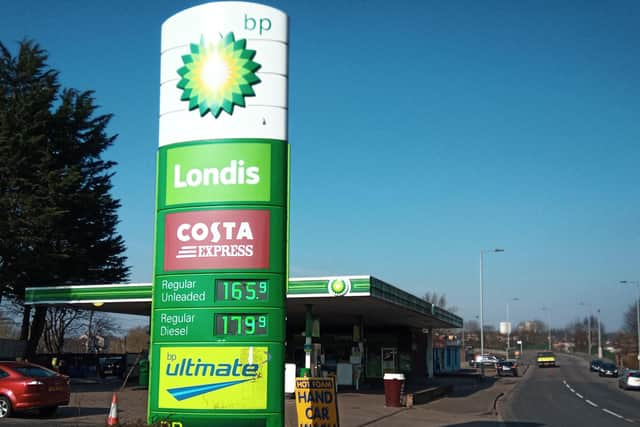As fuel prices soar, many drivers caught in the rush-hour commute may seek an alternative form of travel – Alastair Dalton
Still working from home in Glasgow, with The Scotsman’s office in the city easily accessible by Subway or cycle when required, I have the luxury denied to many other workers of not needing to commute by car.
However, having to collect some shed windows and deposit assorted bulky items at a recycling centre before the start of the working day, I was faced with joining the traffic and adding to the congestion – but it also handily provided a first-hand view from the motoring front line.
My first impression was how straitjacketed drivers are.
Advertisement
Hide AdAdvertisement
Hide Ad

Sitting comfortably, shielded from the rest of the world in their own metal cocoon may be very pleasant, but that box on wheels is often afforded very little for optional movement, hemmed in by other vehicles in tailbacks, with many no-through streets to prevent rat-runners, and a variable if not non-existent supply of parking, often at a price, when you reach your destination.
Additional hold-ups, like temporary traffic lights at roadworks, also got me thinking about how journey times can be as uncertain as finding somewhere to park.
Facing a stationary queue ahead, should I divert onto another route, but would that be any quicker, even if longer?
I soon realised that many options to me as a cyclist were off-limits as a driver because they involve no-vehicle paths and cut-throughs that I hadn’t given a second thought to when riding – it was as if I needed to re-programme the street map in my head.
Then there is the state of the roads.
As a cyclist, you’re used to constantly keeping a sharp eye out for potholes, but I was surprised at the number of seriously big craters I encountered while driving, especially on main roads, that required evasive action to prevent potential damage.
Also, I think most drivers are happy to give riders space on the roads, but this is seriously impaired if crucial markings have been allowed to fade almost completely.
I came across virtually invisible lines marking yellow boxes designed to keep junctions clear, advanced stop lines for cyclists at traffic lights, bus lanes, a mini roundabout, and even, unbelievably, the centre line of the road at one point.
This vital paint should instead leap out at the motorist – in vivid white, yellow and other colours, like green for cycle lanes. It should resemble remnant hieroglyphs from some the distant past.
Advertisement
Hide AdAdvertisement
Hide AdFor some, of course, there will be no alternative to drive, but the soaring cost of fuel should make many question the need for the journey they are making by car.
As if they don’t need reminding, the fast-rising prices displayed at filling station forecourts were startling, with diesel astonishing at more than 180p a litre at one garage.
So, how was my journey? It took far longer than I expected, partly thanks to lane and road closures I would have been able to avoid on a bike – when I would have known pretty much exactly what time I’d arrive.
I’m just thankful it wasn’t a regular drive.
A message from the Editor:
Thank you for reading this article. We're more reliant on your support than ever as the shift in consumer habits brought about by coronavirus impacts our advertisers.
If you haven't already, please consider supporting our trusted, fact-checked journalism by taking out a digital subscription.
Comments
Want to join the conversation? Please or to comment on this article.
